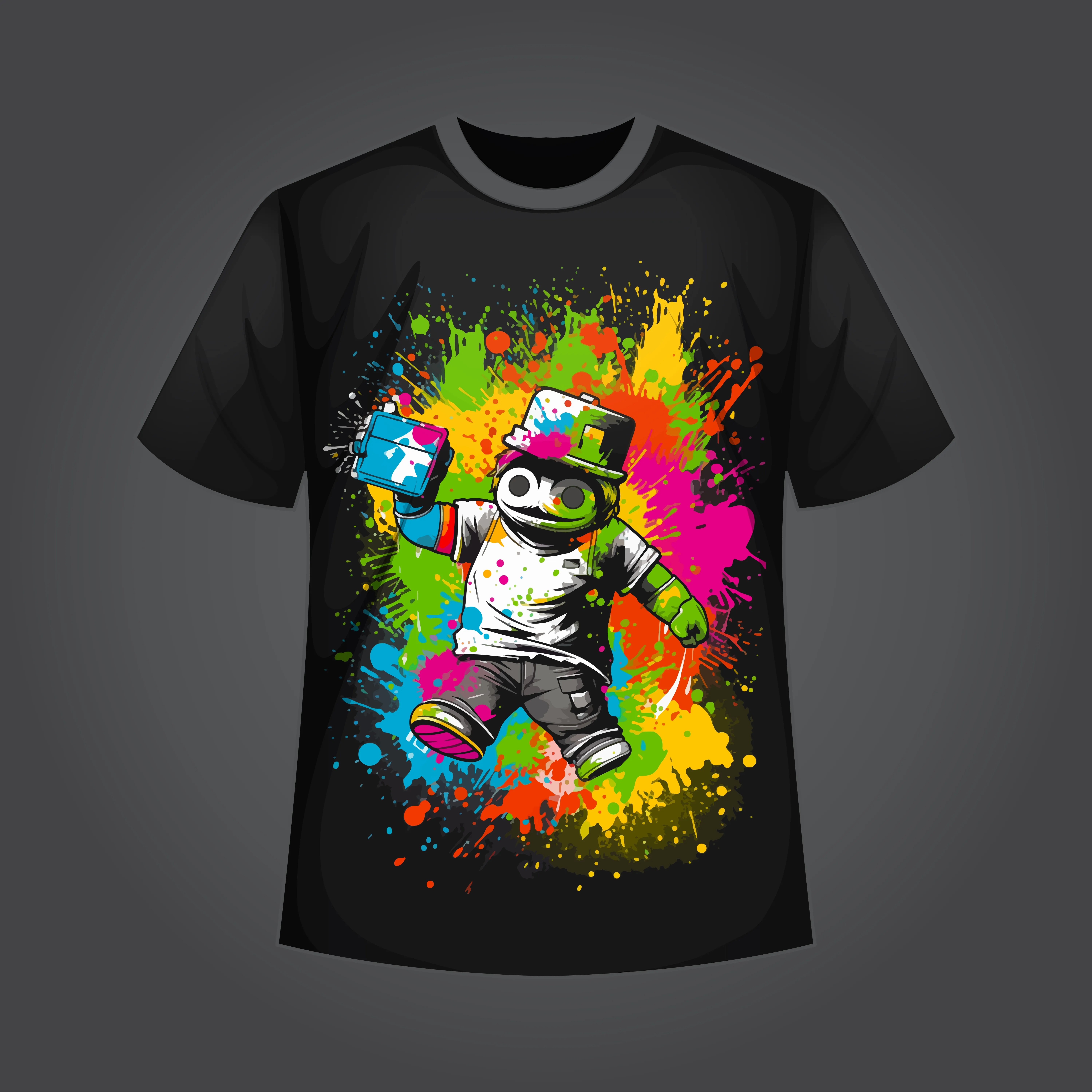How to Make Shirts at Home: 8 Ideas for You to Try
Graphic T-shirts are all the rage now, and for good reason. If you’re struggling to find the perfect design with your favorite song lyrics, superheroes, or iconic movie quotes, no problem! Just make it yourself.
With the right equipment, knowledge, and patience, you can make a custom graphic tee that genuinely reflects your unique style and interests. How? That’s where this guide comes in. Keep reading to learn how to make custom T-shirts from the comfort of your own home.

Table of contents
8 Ways to Make Shirts at Home
There are several techniques you can use to create custom T-shirts at home. Each one varies based on their difficulty and the equipment you need to pull them off successfully.
Truthfully, none of these methods can be done with items you have lying around the house. They all require specialized tools and quite a bit of effort to achieve the desired result. But don’t worry; this guide also outlines how to make custom T-shirts with no effort on your part. Let’s dive in.
Method 1 – Iron-on Transfer Paper
When looking into how to make custom T-shirts at home, you’ll probably encounter this method first. Since it’s arguably the most straightforward (and affordable) DIY option, this shouldn’t come as a surprise.
For the equipment, you’ll need the following:
- An inkjet printer
- An iron
- Transfer paper
- A cotton underlay
- A pair of scissors
Of course, you’ll also need a T-shirt. This method works best for cotton garments, so keep that in mind.
Here’s how to create your custom T-shirt using this method:
- Print your design on the transfer paper. For light transfer paper, the image should be mirrored. For its dark counterpart, no action is required for the graphic.
- Cut out your design carefully and precisely.
- Place the cotton overlay on a hard, heat-resistant surface.
- Place the T-shirt on top of it and iron it.
- Center your design and place it according to the transfer paper instructions.
- Press the transfer paper firmly down and start ironing. Begin at the center and move the iron in an outward direction.
- Leave the T-shirt to cool down for a few minutes.
- Carefully peel off the transfer paper.

Method 2 – Heat Transfer Vinyl
The heat transfer method is beloved by hobbyists who want to create striking designs on T-shirts of various fabrics. However, keep in mind that this method has quite a high learning curve and is typically time-consuming. Plus, it calls for some expensive equipment.
- A vinyl cutter
- A vinyl weeder
- A heat press
- Heat transfer vinyl
- Wax paper
Once you have all the equipment, you can get down to work:
- Create your design using a vector graphic software tool.
- Send the design to your vinyl cutter. Make sure to apply the proper settings based on the design.
- Use the vinyl weeder to scrape off any excess material around the design.
- Place the vinyl design on the heat press, with the adhesive side facing the T-shirt.
- Cover the T-shirt with wax paper.
- Press the T-shirt following the machine’s instructions.
- After the T-shirt cools off, gently remove the vinyl carrier.
Method 3 – Direct-to-Garment Printing
Direct-to-garment (DTG) printing might not be cheap, but it’s certainly highly convenient and fast. If you’re willing to invest a couple thousand dollars on a DTG printer, you won’t ever have to worry about messing up your T-shirt design.
Besides the printer, you’ll need a heat press and adhesive paper. Then, all you need to do is follow these steps:
- Create your design and print it using the DTG printer.
- Apply the transfer media to an adhesive paper using the heat press.
- Manually press the design onto a T-shirt.
Method 4 – White Toner Transfer Printing
This method is similar to DTG printing but involves a less expensive printer – the white toner transfer printer. However, keep in mind that these devices can only print a limited number of colors. Also, they use a white toner instead of liquid ink.
Once you get this printer, the steps are pretty similar to DTG printing:
- Create your design.
- Print the design using transfer paper.
- Use a heat press to apply adhesive to your transfer media.
- Use the same machine to heat-press the design onto your T-shirt.
- Let the T-shirt cool off, and remove the transfer sheet.
Method 5 – Sublimation
Sublimation, or all-over printing, is one of the most durable and effective methods for making custom T-shirts at home. It works best with T-shirts made with synthetic fabrics (especially polyester). Here’s what you need to create custom T-shirts through sublimation:
- A sublimation printer
- Sublimation paper
- Sublimation ink
- A heat press

Gather your tools and start printing!
- Create your design.
- Print it using the sublimation printer (loaded with the appropriate ink) on sublimation paper.
- Line the design on your T-shirt and heat-press it.
- Wait for the T-shirt to cool off.
- Pull the transfer off.
Method 6 – Screen Printing
If you’re on a budget, it might be best to go old-school and use screen printing, as this method requires no fancy equipment. However, it does require handling some potentially hazardous materials and quite a lot of effort, so weigh your options carefully.
As far as equipment goes, your best bet is to buy a screen printing kit that contains all the materials you’ll need to pull this method off. The kit should contain detailed instructions for use. Here’s what you need to do:
- Print your design.
- Coat the framed screen using light-sensitive photo emulsion.
- Let the screen dry in a dark room.
- Place the cut-out design onto the screen.
- Expose the screen to UV light to cure the photo emulsion.
- Rinse the screen with water, leaving your design as a stencil.
- Place your T-shirt on a flat surface and secure it.
- Align the screen with the shirt and apply the design in a single stroke.
- Lift the screen carefully.
- Cure the ink following the instructions.
Method 7 – Embroidery
If you aren’t a fan of printed designs, embroidery offers the perfect alternative. This classic approach works for any type of fabric and is ideal for achieving a stunning textured custom look.
Depending on your skills and experience, you can do this method manually using embroidery needles and threads, straight pinks, and tracing paper. For those who aren’t as skillful with needles, an embroidery printer is the way to go.
The Easiest Way to Make Custom Shirts
It’s perfectly fine if none of the above methods appeal to you. You might be reluctant to invest thousands of dollars in the required machinery or simply lack the time and skills to master these techniques. Whatever the case may be, don’t get discouraged.
Simply turn to method 8 – ordering a custom T-shirt. Now, this method obviously doesn’t involve making T-shirts at home. But it can involve creating stunning designs and then having them applied on a striking T-shirt with absolutely no hassle.
So, say “no” to struggle and “yes” to striking graphic T-shirts at a fraction of the cost of most DIY methods. Order your T-shirt today!